 As more payers turn to an indication-based or pay-for-performance based model to manage the costs of oncology care, oncology marketers will need to adjust their strategies to include a more holistic, value-based message.
As more payers turn to an indication-based or pay-for-performance based model to manage the costs of oncology care, oncology marketers will need to adjust their strategies to include a more holistic, value-based message.
Across the globe, the trend toward more innovative payment models has altered the way oncology treatments are being evaluated, not only by payers, but also by patients and physicians.
The industry finds itself in the middle of an ever-evolving, complicated reimbursement landscape.
The relevance of pay-per-result or pay-for-performance models can be illustrated in the following example. The drug Tarceva (erlotinib) provides, on average, an additional five months of life for lung cancer patients compared with normal care. The same drug provides, on average, only an additional 12 days of life for pancreatic cancer patients.
Currently, payers reimburse the same amount for this oncology drug whether it is used to treat the lung cancer patient who experiences more positive results or the pancreatic cancer patient with only marginal results.
Situations like these are prompting payers and also physicians to challenge how oncology treatments are paid for in the future. For example, Express Scripts is moving to an indication-based formulary for certain medications in 2016.
“Right now, we’re paying top dollar for every indication, including indications where outcomes for the patient are marginal," says Steve Miller, M.D., chief medical officer, Express Scripts. “Paying for performance of a therapy should align with the value that therapy delivers to each individual patient."
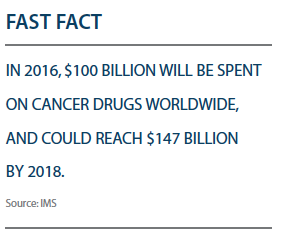 Dr. Miller says more than 100 Express Scripts clients — employers who provide a pharmacy benefit and collectively represent more than 10 million patients — have stated their desire to implement an indication-based formulary for oncology medications.
Dr. Miller says more than 100 Express Scripts clients — employers who provide a pharmacy benefit and collectively represent more than 10 million patients — have stated their desire to implement an indication-based formulary for oncology medications.
The PBM is working with Memorial Sloan Kettering’s Peter Bachm, M.D., and ICER’s Steven Pearson, M.D., to develop the indication-based formulary.
“We’ve received positive feedback from cancer organizations about these proactive steps to make cancer care more affordable and accessible, and we’ve had productive conversations with drug makers who are interested in working with us on this formulary," Dr. Miller says.
“For an indication-based formulary to work, we have to work with pharmaceutical manufacturers and others in the industry to determine how well drugs work for each individual patient," Dr. Miller continues. “Scientific advances — such as tumor testing, predictive analytics, and pharmacogenomics — will help guide this discussion."
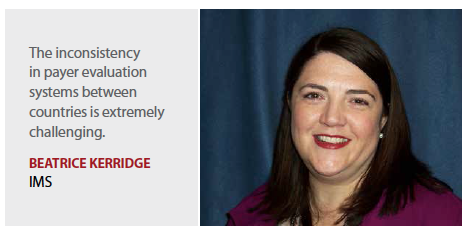 Under this and other new payment models, the life-sciences industry will be faced with not only proving the efficacy of a treatment to the physician, but its cost-effectiveness to the payer and the quality of life it may bring to the patient.
Under this and other new payment models, the life-sciences industry will be faced with not only proving the efficacy of a treatment to the physician, but its cost-effectiveness to the payer and the quality of life it may bring to the patient.
There are many evaluators in the equation of value-based medicine who exert influence on drug development, product registration, product uptake, and ultimately the final value assessment of the therapy.
According to a recent Quintiles white paper, oncologists, medical specialists, patients, physicians, other healthcare providers, independent regulators, governmental agencies, third-party payers, advocacy groups, and social media drivers, including Internet commentators and participants in health-related Internet forums, all contribute to the determination of value of a treatment and must be considered in the commercial plan.
EU vs. U.S. Pay-for-Performance Plans
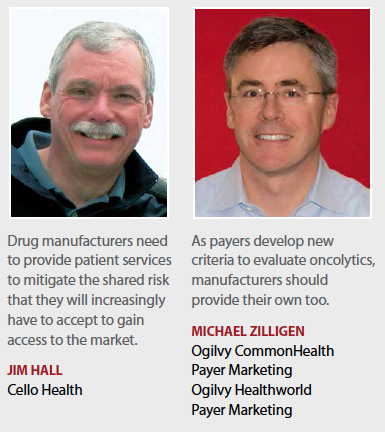 Performance-linked payment has been happening in Europe for nearly a decade and has recently been gaining momentum in the United States. Our experts predict that it will become a more common plan globally in the near future.
Performance-linked payment has been happening in Europe for nearly a decade and has recently been gaining momentum in the United States. Our experts predict that it will become a more common plan globally in the near future.
“The model of trying one treatment, and then moving on to another one if it proves to be not effective, is not sustainable in an increasingly restricted payer environment," says Jim Hall, president, Cello Health BioConsulting. “Payers now want a guarantee that there will be positive results, and for the pharma company to accept a big part of the risk, i.e. the potential cost, if a treatment doesn’t work."
One of biggest challenges in the European Union is the lack of consistency among evaluation processes from country to country. This inconsistency in evaluation systems is extremely challenging for pharmaceutical companies, says Beatrice Kerridge, senior principal, oncology offering development, IMS. She adds that oncology marketers must be familiar with each system and be able to manage the different requirements.
“A positive rating in one country doesn’t mean the treatment will get the same rating or result in another country," Ms. Kerridge says. “Navigating the different criteria from country to country can be difficult."
Using local market knowledge and reviewing past results can help build a best practice, but there still is no guarantee of reimbursement, she says.
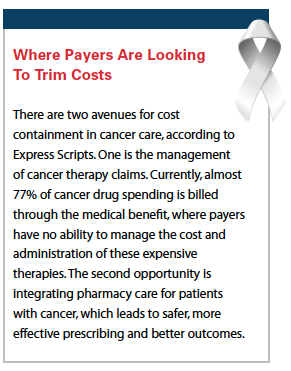 “It is often hard to predict exactly what will happen because there are multiple criteria, besides overall survival, that payers take into account, and even best practices and local knowledge can’t answer that million-dollar question," Ms. Kerridge says.
“It is often hard to predict exactly what will happen because there are multiple criteria, besides overall survival, that payers take into account, and even best practices and local knowledge can’t answer that million-dollar question," Ms. Kerridge says.
Historically, U.S. payers have had little control over the costs of oncology treatments or managing reimbursement for them. However, now that cancer is viewed more as a chronic disease by the industry than a specialty disease, along with the increasing traction of accountable caer organizations (ACOs) and the impact of healthcare reform, major health plan organizations have started to initiate new payment models for oncology reimbursement.
To help guide these evaluations, The American Society of Clinical Oncology released a framework to assess the value of cancer treatment options June 23, 2015. (The framework can be viewed online at asco.org/value.)
This standardized methodology is designed to assist oncologists when counseling their patients in comparing the relative clinical benefit, toxicity, and cost of treatments.
While the framework starts an important conversation about the value of treatments, it contains limitations, says Michael Zilligen, president of Ogilvy CommonHealth Payer Marketing and Ogilvy Healthworld Payer Marketing, both are part of Ogilvy CommonHealth Worldwide.
“Admirably, the framework requires a high level of quality for evidence, for example, randomized, controlled trials," he says. “However, comparisons based on other sources of data, such as from electronic health records or analyses from registries or patient reported outcomes, are not included."
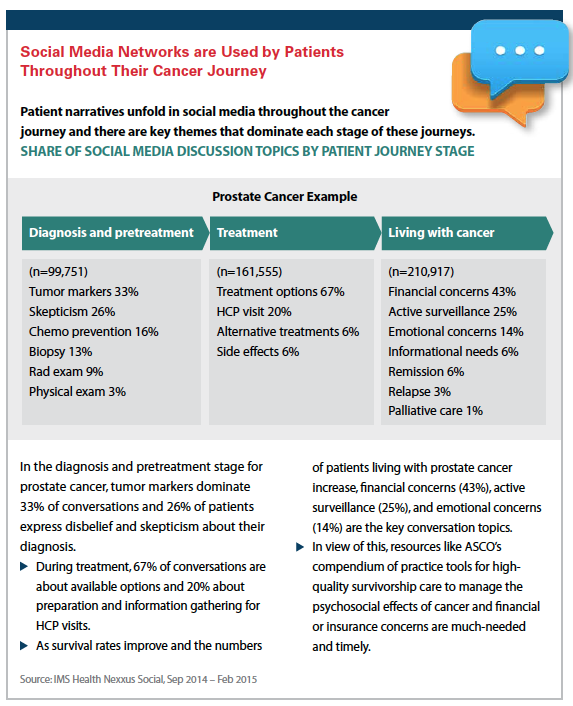 He says, while drug acquisition cost is a measurable and important input to the framework, the model also evaluates the patient’s cost, which is variable based on the specifics of insurance and its cost-sharing rules, for example premiums, co-payments, coinsurance, and deductibles.
He says, while drug acquisition cost is a measurable and important input to the framework, the model also evaluates the patient’s cost, which is variable based on the specifics of insurance and its cost-sharing rules, for example premiums, co-payments, coinsurance, and deductibles.
However, not including other metrics in the guidelines, such as other healthcare costs or savings, such as additional or fewer hospitalizations, lab tests, diagnostic procedures, etc., including the savings a payer may realize by using a biomarker that helps to reduce or eliminate altogether nonresponders to a specific treatment, is a major drawback of the plan, Mr. Zilligen says.
“These shortcomings represent an immediate opportunity for pharmaceutical and biotechnology manufacturers to expand the discussion about drug value," he says. “From the manufacturer’s point of view, an essential element of the value proposition for a drug is the other health system interventions and costs that can be reduced or eliminated.
Marketers need to do a more effective job communicating their products’ value, offering a more complete model that includes other important variables, and utilizing real-world evidence to fortify their arguments. Essentially, if payers are developing and employing many new criteria to evaluate oncolytics, pharmaceutical and biotech manufacturers should provide their own, too, based on rigorous methodologies and outcomes, and engage the discussion on solid footing."
Changes in Strategy
The shift away from the physician being the sole decision maker in the treatment of cancer and other diseases is another emerging trend that is creating new challenges around proving the treatment value to other stakeholders.
In Europe, Fred Bassett, co-founder and head of strategy at Blue Latitude, has witnessed a shift away from positioning products exclusively to physicians to a broader approach that includes all stakeholders. For example, oncology nurses are an important and often overlooked element of influence in the patient’s care.
“There’s a growing understanding that marketers now have to look a bit more holistically and not focus just on clinical value but also the overall value to clearly address the needs of all stakeholders," Mr. Bassett says. “To address that challenge, marketers need to understand how value is assessed by all stakeholders, and also understand how they interact to make sure all the information combined provides a consistent and compelling view of the product."
For example, while conducting research in the payer environment, Blue Latitude discovered that often pharmaceutical companies would segment and tailor messages to each group, which is a common and often viable practice in marketing to diverse groups, but this created a problem: when the different stakeholders came together to discuss reimbursement, they had different views of the treatment, making a cohesive discussion impossible.
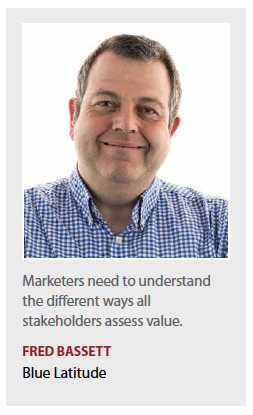 “We’ve heard on more than one occasion that a senior payer and a senior clinician would sit down to discuss a reimbursement decision, but what occurred instead was a 40-minute discussion on why the two of them had different information on the drug, so instead of talking about value, they spent that time talking about apparent discrepancies in data," Mr. Bassett says.
“We’ve heard on more than one occasion that a senior payer and a senior clinician would sit down to discuss a reimbursement decision, but what occurred instead was a 40-minute discussion on why the two of them had different information on the drug, so instead of talking about value, they spent that time talking about apparent discrepancies in data," Mr. Bassett says.
Companies also are not taking into account the rapidly changing field of oncology, and without a long-term view, they may end up strategizing around today’s market but by the time the drug comes to market, the landscape may have changed greatly.
“Companies are not painting the big picture of how the market is going to evolve," Mr. Bassett says. “A significant unmet need now may not be so unmet or prevalent in three years time, so given the lead time, they may be writing an old strategy."
In this dynamic space, manufacturers may want to anticipate changes in the next two to four years, Mr. Zilligen says.
“An effective long-term strategy for companies may be to develop a clinical and communication plan based on the upcoming NCCN evidence cubes, a decision-making tool that uses consistent methodology and scores in such dimensions as efficacy, safety, quality of evidence, consistency of evidence, and affordability," he says.
Oncology’s New Headache
Risk sharing, payment models, and patient services are new areas of contention. As the market continues to change, risk-sharing strategies, new payment models, and patient services will play an important role in future oncology-marketing initiatives.
The industry has already jumped onboard with various patient services in the oncology space, ranging from patient assistance programs that help pay for medicines patients can’t afford, to patient education and support services, including support from specialty pharmacy distributors. Patients are driving this demand, Ms. Kerridge says.
“As consumers have more out of pocket expense they are demanding a lot more information and knowledge about their treatments," she says.
For example, the high-deductible health plans require more cost-sharing from the patients, and inevitably result in more informed and engaged patients who are more closely scrutinizing the options, costs, and the value of oncology and other high-cost treatments, Mr. Zilligen says.
One result of this increased consumer scrutiny is an increase in popularity of patient access solutions, often referred to as hubs, which provide essential services to cancer patients, such as clinical information, financial support services, side-effect management, as well as to providers, for information about benefits verification, billing, and purchasing.
Physicians also want more information that will allow them to better understand the nuances of the clinical profiles, appropriate patients who will best respond to the different therapies, new targeted therapies as they are faced with more choices for treatment options for their patients than ever before.
On the care delivery side, global, prospective payments for an episode of cancer care, or narrow networks of providers, are forcing providers to consider costs and outcomes that affect the whole patient or whole disease and not just the most recent intervention or visit, Mr. Zilligen says.
“With the emergence of immuno-oncolytics, which will likely be used in combination with other high-cost oncology drugs, the cost burden, or ‘financial toxicity’ in some stakeholders’ vernacular, will become even more onerous," Mr. Zilligen says. “New statements of product value will become part of the complete drug offering, which will include custom solutions including financial support, tools for adherence, administration, and patient counseling."
These services will become even more important to a drug’s success, could influence patient, provider and payer endorsement, and essentially will become the cost of entry for new drugs.
All payers are looking at the bigger picture of a patient’s treatment comorbidities, for example, as opposed to just focusing on the treatment and its efficacy.
Whether the treatment actually improves the patient’s outcome is on every major payers mind, says Paula Boultbee, oncology market specialist, FreshBlood.
“Payers already put prior authorization on all cancer products; you can’t get any cancer treatment from any large payer without prior authorization, so they are controlling costs," Ms. Boultbee adds. “We are in an era of cost-savings."
According to Mr. Hall, risk-sharing strategies will play an increasingly important role in the oncology market, with payment based on success rather than straightforward levels of prescribing. Up until now the metrics have been largely set and tested pre-launch; increasingly they will be real-world metrics, and more definitive.
“The strategic imperative is that the risk has to be shared in a way that is beneficial to each stakeholder: patients, physicians, payers, and the pharma company itself," he says.
A big part of this is ensuring that a given drug is prescribed for the right patients — those who are most likely to respond to it. Seeing a better track record on response bodes well for the drug company, because there is more careful screening to ensure that only appropriate patients receive the treatment in the first place — and that improved track record will encourage others to prescribe, and reimburse, the product, Mr. Hall says.
“Working out the metrics involved in risk-sharing is critical, so that the equilibrium of risk is balanced," Mr. Hall says. “The key strategic aim — for all parties — has to be entering these agreements as equal parties."
This scrutiny is going to make it more difficult for non-differentiated me-too drugs to get reimbursed, especially in the oncology space.
“I think the biggest challenge today is that pharma manufacturers spend the majority of their R&D dollars on improvement of an existing molecule or existing target," Ms. Boultbee says. “Companies may have improved the formulation and the safety of a product but from a payer’s point of view, they will need to prove that this is not just a strategy to protect their patents and prices over time. Manufacturers who are working on me-too treatments will have the greatest challenge of all in this new environment where risk sharing and changing payment models and personalized medicine are driving the logic components to patient care."
Patient services can add to the value of these products, but if payers don’t perceive the value, they may just ask the company to strip the patient services and provide their product at a discounted rate on a payer’s formulary, Ms. Boultbee warns.
“This is where metrics around quality of life come into play, which in Europe is not as an important a metric as it is in the United States," Mr. Hall says. “Clinically better isn’t just about extending a life, even in oncology; quality of life is going to have to be considered also." (PV)


















